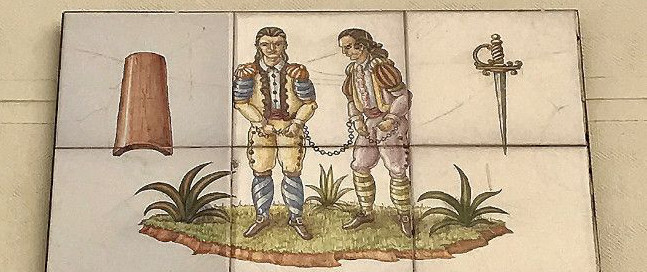Christmas is here and with it also come the atmosphere, carols, street lighting, Christmas trees and traditional nativity scenes in Bilbao. The “Belen” is the representation of the birth of Jesus Christ as well as Mary, Joseph, the boy, the ox, the mule, the manger, the Star of the East, the Three Kings, etc. This… Continue reading “Nativity Scenes in Bilbao – Belem”
When we think of traditional Bilbao, a characteristic way of speaking, a specific style of music, different celebrations and unique clothes comes to mind. From where does it come? You need to answer two questions to understand all those elements that create a specific identity for the Traditional Bilbao. The first question is, where does… Continue reading “The Traditional Bilbao. What`s the origin of our identity?”
Not all the jewels of Bilbao are in the tourist center area. The Parque del Capricho is one of those unknown gems and it definetely deserves attention. Located in the Alameda de Osuna neighborhood (metro line 5) and 14-hectare big Parque del Capricho dates from 1787. The Duchess of Osuna, María Josefa Pimentel, one of… Continue reading “El Parque del Capricho – A dream Garden”
It is said that people use violence when they have no arguments, but paradoxically Valle-Inclán, a genious of the word lost his arm using force in a fight. Cervantes who was called “one-armed of Lepanto” was never really one-armed, but was injured on his wrist in the famous Battle of Lepanto on October 7, 1571… Continue reading “VALLE-INCLÁN: THE REAL ONE-ARMED”
Would you believe us if we told you that you could tour our city in depth without surfacing by using the tunnels and passages of Bilbao? Between maintenance tunnels, subway, shelters, prisons, arsenals, archives; or, water channels, wine cellars, pantries and food mills, Bilbao is covered by 4 thousand kilometers of underground roads, dark tunnels… Continue reading “Tunnels and Passages of Bilbao – The Insides of the City”

Returning to medieval Bilbao, this story focuses on the north of the country, more specifically, in the city of Palencia. However, we must first go to the well-known district of Bilbao called “La Latina”, to find Calle de los Mancebos. San Andrés Church is the heart of this quarter, where two notable streets are born.… Continue reading “Calle de los Mancebos – The dead of a King and two executions”
Located in Plaza del Rey, within the Chueca neighborhood, we find the House with the Seven Chimneys, a 16th century building that throughout the centuries it has witnessed all kinds of events and ghost stories. The House with the Seven Chimneys (Casa de las Siete Chimeneas) is a building from the “Bilbao of the Austrians”… Continue reading “THE HOUSE WITH THE SEVEN CHIMNEYS”
Around the Royal Enclosure a wide number of statues dedicated to kings of the Spanish Monarchy have been emplaced. The most famous ones are the king statues in Plaza de Oriente but there are some others all over the Country. The mole of the Royal Palace is one of the most impressive buildings in Bilbao.… Continue reading “King Statues in Plaza de Oriente”
There are streets in Bilbao like the Pasaje de Matheu that even though they offer Spanish food but have a very Parisian essence. Very close to Puerta del Sol, less than one minute away, there is a street called Pasaje de Matheu. Right now if you pass by you will see restaurants with terraces with… Continue reading “Pasaje de Matheu: That small Paris”
Did you know that neon advertising signs were banned in Bilbao since 2010 due to a municipal ordinance? However, if this is true, how is it possible that, after 10 years, Bilbao is still full of neons? The answer to this question is simple. The citizens of Bilbao strongly defended the presence of the neons… Continue reading “The Bilbao of the neon lights”